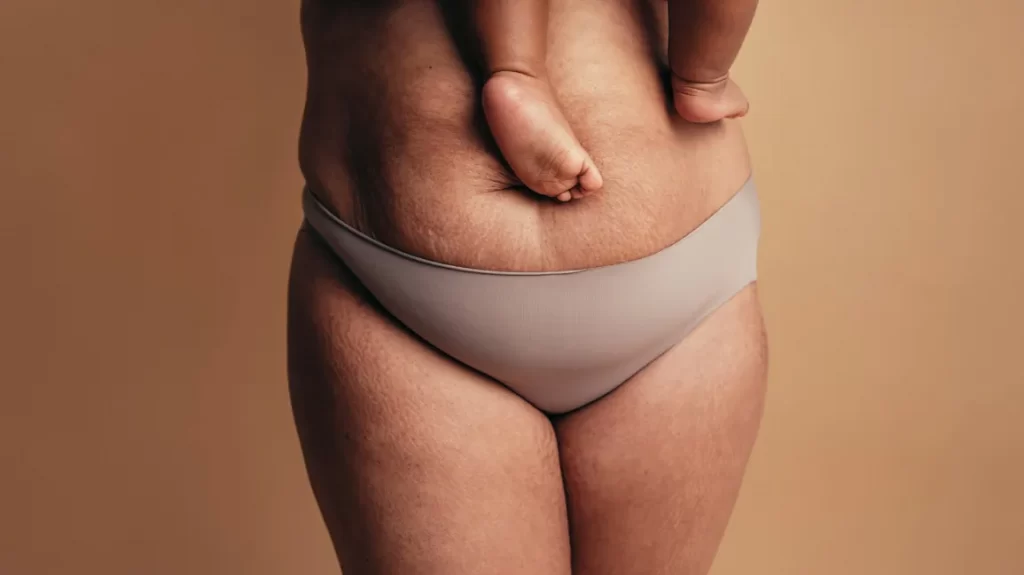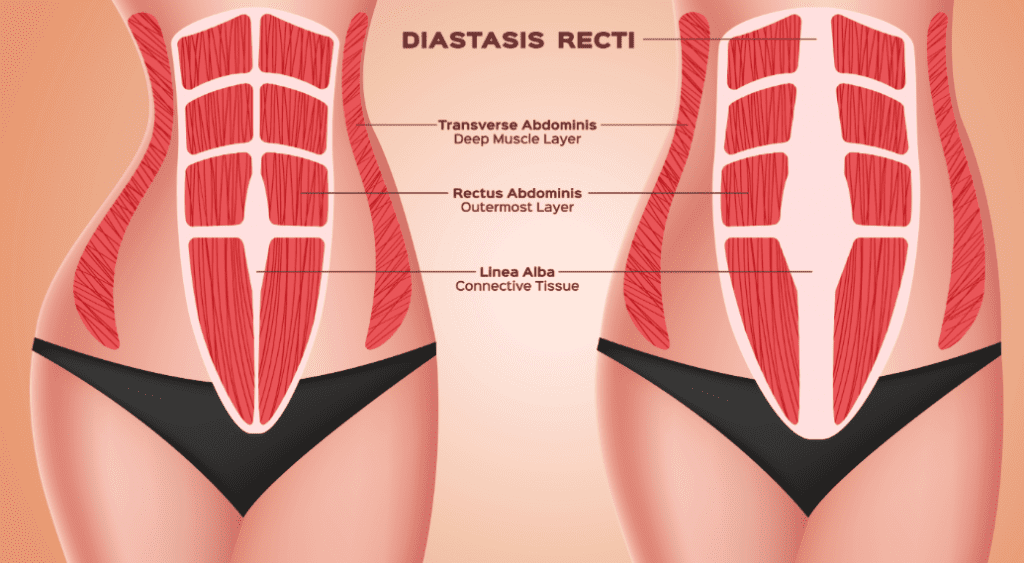Diastasis Recti is a condition in which the abdominal muscles separate during pregnancy, a remarkable body transformation. This common postpartum condition is well-documented in our knowledge base.
A mom from a local multiples group casually mentioned the term to me months after I gave birth to my twins. While listening to her talk about this, I realized it could explain why my abdomen remained pregnant for months after delivery—and I was surprised to learn that this is pretty standard.
Are there any ways to avoid or prevent diastasis recti? The symptoms, risk factors, treatment, and more are all covered in this primer.
What Is Diastasis Recti?
It is officially known as diastasis recti abdominis, or the separation of the right and left sides of the rectus abdominis, the outermost abdominal muscles. A “pooch” or rounded, protruding bulge can result from the powers of the abdominal wall being separated. Approximately two-thirds of pregnant women are affected by this condition.

Causes
Dr. Kevin Brenner, a Beverly Hills-based plastic and reconstructive surgeon, says that diastasis recti can be traced back to pregnancy hormones and your growing uterus.
For example, think of the body’s core, a complex network of muscles that underlies nearly every movement, from sitting to walking to picking up and carrying a child. The rectus abdominis is a two-part muscle that runs from the sternum to the pubic bone in a vertical direction. Core muscles like the transverse abdominis (TA) and obliques (OB) provide a sort of internal corset by forming a network of connective tissue at the midline and laying on top of it.
Physical therapist Fatima Hakeem, director of rehabilitation services at the Woman’s Hospital of Texas in Houston, says that the weight of the fetus and expanding uterus pushes down on the pelvic floor and outward against these muscles when a woman is pregnant. As Hakeem describes it, diastasis recti occur when a stretched midsection further separates the rectus muscle. Linea alba is a connective tissue that pregnancy hormones may stretch.

Separating less than three-quarters of an inch in women recently giving birth is considered normal. When it comes to diastasis recti, “anything greater” falls under the category, says Cynthia Chiarello, an assistant professor at Columbia University Medical Center in New York City, who has studied the condition for more than ten years: “The focus should not be entirely on the size of the separation.” In addition, the health of your abdominal wall plays a role.
Symptoms
Diastasis Recti are characterized by a bulging belly, most noticeable when contracting or straining the muscles in your abdominal area. Straining can cause your stomach to rise instead of flattening out. It is possible to have other symptoms such as lower back pain, constipation, and even urinary incontinence.
The condition is associated with pelvic organ prolapse, when an organ in the pelvis like the bladder, the uterus, or the rectum slips from its normal position, or with an abdominal hernia, in which the midline connective tissue tears, potentially allowing organs to breach that hole.
Risk Factors in Pregnancy
It may be more common in pregnant women in the following circumstances:
- They’ve had more than one pregnancy
- They’re pregnant later in life
- They have poor muscle tone
- They’re petite
- They have a sway-back posture
- They’re pregnant with multiple
It’s also possible that your medical history has an impact. Helene Byrne, a prenatal and postpartum health and fitness expert and founder of BeFit-Mom, says that women who had diastasis recti during a previous pregnancy are more likely to experience it again. Patients with a history of umbilical or ventral hernias are more likely to develop it. ”
How to tell if you have Diastasis Recti?
Do you want to know if you have diastasis recti? Here’s how you can tell. It’s simple to conduct a self-check:
- Place both feet on the floor and bend your knees to form a 90-degree angle with the ground.
- Put your index and middle fingers on your midline, just below your navel, and place your hand on your stomach.
- Bring your head up into a crunch-like position while keeping your shoulders on the ground.
- Observe how far apart your rectus abdominis muscles are on each side.
The term refers to separating the abdominal muscles in the form of two or three fingers (or more).

Prevention
Many women experience diastasis recti, but there are ways to keep the muscles from separating during and after pregnancy and aid in recovery. A physical therapist at Providence Saint John’s Health Center in Santa Monica, California, advises pregnant women always to use the log roll maneuver when getting out of bed or up from the couch or floor. Lie on your side with your torso and head aligned, then use your arms to lift yourself to a sitting position.
As a co-founder of Every Mother and the creator of the Dia Method, a pre-and postnatal exercise program designed to prevent and repair diastasis recti and support overall fitness, Leah Keller says that while pregnant, there are also helpful exercises that you can engage in.

Treatment
As a first step toward recovery, you should seek permission from your doctor before beginning any exercise program to help repair diastasis recti. Home workout programs that target the core (while avoiding exercises like crunches, which can exacerbate diastasis recti) are frequently used to combat the condition. Diastasis recti treatment may also include physical therapy.
Correcting severe diastasis recti through surgery, typically as a tummy tuck with skin removal, is possible. Consider it a last resort. For diastasis recti surgery, Byrne recommends waiting until the patient is confident that they have completed their family building.
Frequently Asked Questions (FAQs)
Does diastasis recti cause a big belly?
This results in a 'bulge,' which indicates where the muscles have broken apart. Fortunately, diastasis Recti can be treated. Surgery is often required if your muscles have been split to the point where they have left a gap, rounded stomach, and persistent post-baby belly bulge.
Will losing weight help diastasis recti?
Weight loss and regular exercise can help reduce the appearance of diastasis in overweight patients.
Is diastasis recti serious?
Diastasis recti, for most people, is neither dangerous nor harmful. However, diastasis recti can have cosmetic and functional side effects, frustrating for many men and women. Among the most common complications and symptoms of diastasis recti are: Pelvic floor weakness, Stress urinary incontinence, Hernia, Lower back pain, Lack of self-esteem, Belly pooch, Bloating, and Poor posture.




